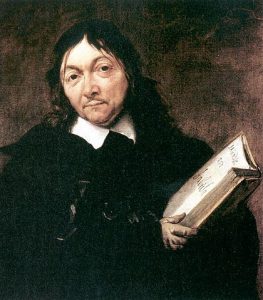Why —we wondered— did it become necessary for so many thinkers around the globe —a number far higher than 13— to think with Nietzsche? How did they think with Nietzsche? We are not interested in understanding a certain flow of influences; we are not interested in identifying the sources used, whether understood or misunderstood, by this or that person. All this hydrographical research is far from what we are investigating in this thirteen-thirteenness of Nietzsche and his readers, right and left.
How did Maurice Blanchot —our guest for this third session— think with Nietzsche. There are many different doors to be opened, and Annelies Schulte-Nordholt and Etienne Balibar show us the way through some of them. Bernard Harcourt has also opened some new ones in his critical-questions filled epilogue. I want to simply point to one in particular that intrigues me enormously.
We can identify this intriguing door in that moment in which, speaking of Nietzsche, Blanchot quotes the words written on the book held by Descartes, on Jan Baptist Weenix’s 1647 portrait of of the philosopher. “Mundus est fabula” (The infinite conversation, 166). The world is a fable. Fable is a keyword for Nietzsche: he repeatedly begun his texts with different unfinished, fragmentary fables; other times, he interspersed, equally in a fragmented way, in his writings. Fables of untimely history, of language, of truth —remember that planet lost among thousands of solar systems in which wise animals invented knowledge (“In irgend einem abgelegenen Winkel des in zahllosen Sonnensystemen flimmernd ausgegossenen Weltalls gab es einmal ein Gestirn, auf dem kluge Thiere das Erkennen erfanden” On Truth and Lie in a Non-moral sense). Fables that are maybe the deployment of a metaphor —the eternal recurrence. Fables that encompass an entirely new persona speaking an entirely new fabricated philosophical language —Zarathustra.
“In thinking the world —Blanchot says— Nietzsche thinks it is a text. Is this a metaphor? It is a metaphor. Thinking the world at this depth that is not reached by the light of the day, he substitutes for it a metaphor that seems to restore to the day all its prerogatives. For what is a text? A set of phenomena that hold themselves in view; and what is writing if not bringing into view, making appear, bringing to the surface?” (IC, 165) This is the intended power of writing: unveiling by covering things with the veil of fable, of fragmentation, of metaphor. Questioning the metaphor as a possibility for writing knowledge, philosophy, and thought —a living element of Nietzsche’s work, as Sarah Kofman also demonstrated in his Nietzsche and Metaphor— is maybe not a casual trope. On the contrary, the metaphor is the seed of knowledge, both physical and metaphysical —the first question of the first article of the first part to Thomas Aquinas’ Summa Theologiae addresses the question whether metaphors and fiction are legitimate resources for theological thinking. The metaphor, the fable underlying the narrative of the world would determine the nature of this world.
Mundus est fabula. What kind of fable? Maurice Blanchot’s work of writing, his livre à venir is a process to discover the kind of fable the world is. In his short essay on “Le langage de la fiction”, included in La part du feu, he claims that fictional language —the language that veils and unveils the world-as-fable— provides us with the consciousness of the ignorance of a world to which we cannot have any access, the world created with the language of fiction. Since we cannot have access to this fictional world in particular, to this fable in particular, we need to have access to its meaning, to its allegories, to its interpretations.
It is perhaps not a surprise that Blanchot’s essay “Du côté de Nietzsche” is eminently devoted to Henri de Lubac, le Père Lubac, and his work on Le Drame de l’humanisme athée. A book, as Blanchot puts it, written for Christians alone. If Henri de Lubac is so important, it is not only because of that book of 1944, but also because of the whole project the Père Lubac was engaged in, that included the political fable of the corpus mysticum, the dialogues between buddhism and christianity, and more importantly, the whole universe of christian exegesis that would end up in his multivolume work published in the late the fifties, Les quatre sens de l’écriture —a book on how to interpret the fable of the world; on how to write the fable of the world.
This is one of the central questions, I guess, in which Blanchot thinks with Nietzsche —and especially with the Nietzsche who thinks that the truth is a process of invention (erfindung), that is, a poetical and rhetorical invention, or inventio, and therefore the articulation of writing strategies, of fables, myths, personae or masks, and fragments of writing that explore the very nature and the very fiction (as fabrication) of language.
Mundus est fabula. But let me continue in Latin, this time with Horace: quod rides? / De te fabula narratur —don’t laugh at it, for the fable speaks about you. In Le pas au-delà one could say, the fable talks about something much more important that you (than me). It talks about “il” —the third-person singular personal pronoun, masculine or, more probably, neutral, the great fiction, fabrication, fable of neutrality.
Mundus est, indeed, fabula. And that’s the real critical question. Fable is a language that needs to be written, and writing is the greatest act of violence, one that breaks all the laws —even its own.
